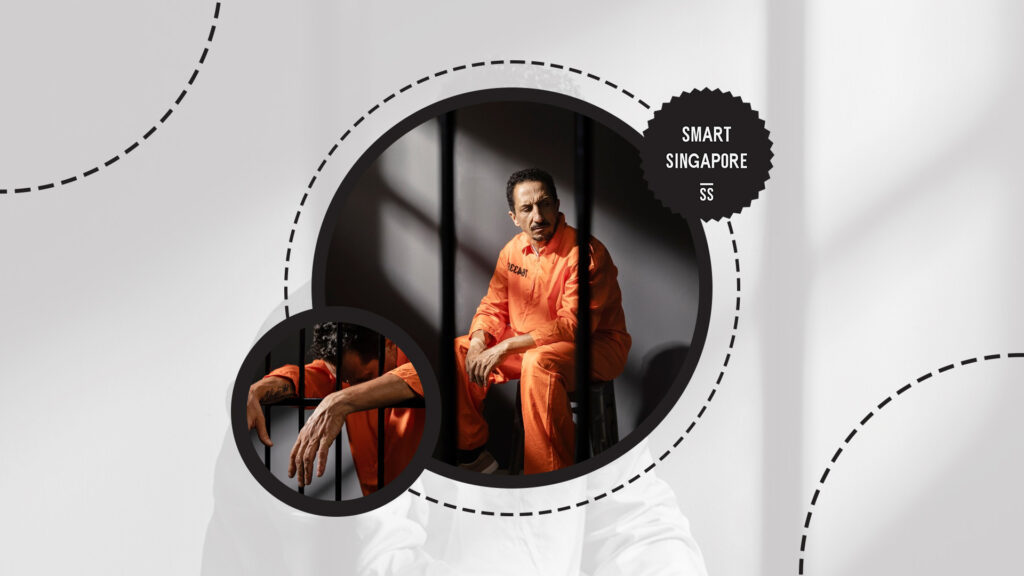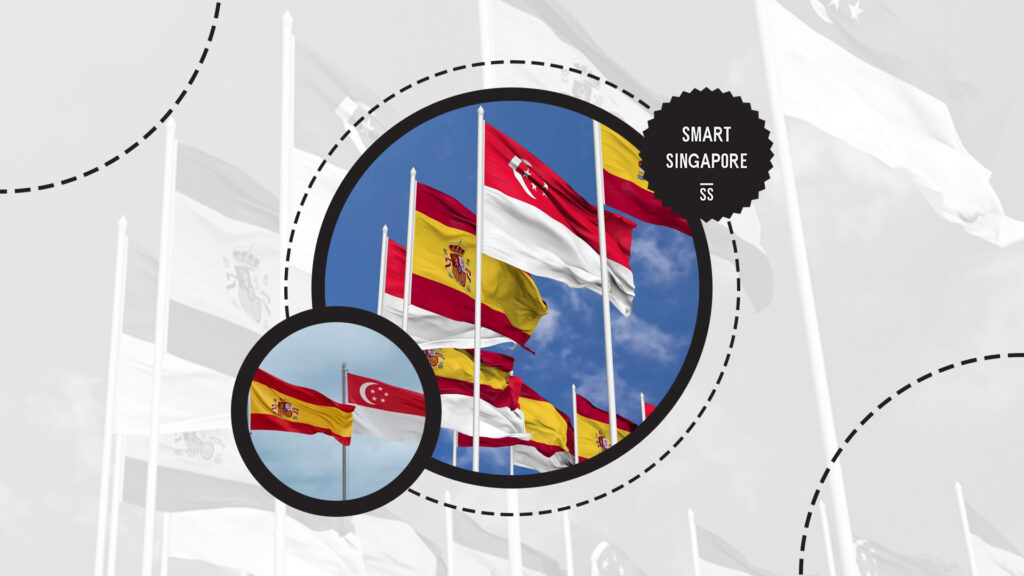Categories > Guides and Tips

Singapore vs. Spain: Where should I settle?
- Cost of Living in Singapore vs. Spain
- Real Estate Prices in Singapore vs. Spain
- Diversity and Demographics in Singapore vs. Spain
- Population Statistics
- Citizenship Laws
- Career Opportunities in Singapore vs. Spain
- Crime and Safety in Singapore vs. Spain
- Lifestyle in Singapore vs. Spain
- Weather in Singapore vs. Spain
- Things to Do in Singapore vs. Spain
- Healthcare in Singapore vs. Germany
- Singapore vs. Spain: Which is better?
Both Spain and Singapore are highly diverse countries that offer a plethora of sights, abundant career opportunities, and a high standard of life. It’s hard to choose between the two to relocate to, but if I had to, I’d keep these in mind:
Choose Singapore for a fast-paced, tech-driven city life with luxurious resorts and attractions nearby. Choose Spain for its laid-back lifestyle, deep traditions, rich history, heritage sites, and diverse climate.
It’s honestly apples and oranges with these two countries, but we broke down all the necessary details like cost of living, career opportunities, lifestyles, and more in this guide to help you make the right choice.
Cost of Living in Singapore vs. Spain

The overall cost of living in Spain is 49.9% cheaper than in Singapore, according to Numbeo. If you’re living in Madrid, Spain’s capital city, the cost of living is slightly more expensive compared to living in a less densely populated city like Avila.
The average monthly rent for a one-bedroom apartment in Spain is $1,422.44, while in Singapore, it’s $3,769.
Living in Singapore is significantly more expensive than in Spain if you’re living by yourself. According to Numbeo, a family of four average monthly expenses in Singapore could reach up to $7,000 while in Spain, around $3,500 to $5,000 is enough.
See the table below for a breakdown of living expenses between Singapore and Spain:
| Expenses | Spain Cost | Singapore Cost |
| Housing (Average Rent per Month) | ||
| 1-bedroom apartment (downtown) | $1,422.44 | $3,769 |
| 1-bedroom apartment (outside the city centre) | $1,061 | $2,736 |
| 3-bedroom apartment (downtown) | $2,290 | $7,125 |
| 3-bedroom apartment (outside the city centre) | $1,594 | $5,028 |
| Utilities (Average Monthly Bill) | ||
| Utility bill for one person | $195 | $238 |
| Internet plan | $47 | $46 |
| Transportation (Fare) | ||
| 1-way ticket (local transport ticket) | $2.19 | $2.00 |
| Monthly pass (local transport ticket) | $43.86 | $128 |
| Taxi start (normal tariff) | $5.12 | $4.30 |
| Gasoline (1 litre) | $2.34 | $2.83 |
| Childcare and Education | ||
| Preschool or kindergarten | $762 per month | $1,498 per month |
| Primary school (private and international) | $13,707 per year | $37,472 per year |
Notably, dining out in Spain is 7.3% pricier than in Singapore, with an average meal costing $21.93 versus $15 in Singapore. Also, groceries in Singapore are 30.2% more expensive, potentially raising monthly expenses to nearly $10,000 for a family.
Real Estate Prices in Singapore vs. Spain

According to Numbeo, real estate prices in Spain are cheaper, with the average price at $5,281 per square metre. In Singapore, prices start at $26,924 per square metre for properties (specifically apartments or condo units) in the city centre.
In Madrid, real estate prices can go upwards of $8,132 per square metre for condo units or apartments.
Note that Singapore, with less land and a high population density, has expensive flats and condos, while detached homes are rare.
Spain, with multiple major cities and suburbs around business districts, offers more affordable real estate options.
For example, properties outside of city centres cost about $18,071 per square metre in Singapore and $4,968 per square metre in Spain.
| Property Type | Spain | Singapore |
| Single-Family Home (Detached or Landed) | $4,100 per square metre | $44,726 per square metre |
| Condo or Apartment | $5,281 per square metre | $26,924 per square metre |
Diversity and Demographics in Singapore vs. Spain

Spain, the third largest country in Europe, boasts a diverse population from Eastern and Western Europe, Africa, and South America. The major ethnic groups are Galician, Catalan, Castilian, and Basque, with minor groups like Andalusians and Valencians.
Singapore is a culturally diverse country, with ethnic groups hailing from East, South, and Southeast Asia.
Although English is widely spoken, Malay is Singapore’s national language, spoken alongside Chinese and Tamil. Singlish, a blend of English and Singaporean slang, is also popular among locals.
On the other hand, 84.8% of Spain’s population is predominantly Spanish (according to the Central Intelligence Agency’s Country Summary), with the majority speaking Castilian. The rest speak Catalan, Galician, and Basque Spanish.
For a better view of Spain’s and Singapore’s racial composition, refer to the table below with data collected from Index Mundi:
| Racial Composition | Spain | Racial Composition | Singapore |
| Spanish (Castilians, Catalans, Basque, Galician, etc.) | 84.8% | Chinese | 74.2% |
| Moroccan | 1.7% | Malay | 13.7% |
| Romanian | 1.2% | Indian | 8.9% |
| Other | 12.3% | Other | 3.2% |
Population Statistics
| Spain | Singapore | |
| Geographic Location | Europe | Southeast Asia |
| Size (Area) | 505,370 square kilometres | 734.3 square kilometres |
| Total Population | 47,280,433 | 6,044,290 |
| Female Population | 24,211,106 | 3,014,829 |
| Male Population | 23,069,327 | 3,013,630 |
| Median Age | 43.9 years old | 42.8 years old |
| Life Expectancy at Birth | 85.3 years old | 84.27 years old |
Both countries have a slightly larger female population, making the gender distribution nearly balanced.
Moreover, Singapore has had a steady increase in its population over the past decade. According to the Singapore Department of Statistics, the island’s population grew by 5% in 2023 following a massive decline of -4.1% in 2021.
On the other hand, Spain has seen a significant decline in its birth rate since 1941 (according to Eurostat). In the past decade, the birth rate has dropped by nearly 25%, likely due to unemployment, rising housing costs, delayed childbearing, and economic uncertainty.
Citizenship Laws
According to the Punto de Accesso General, citizenship laws in Spain are similar to Singapore in that dual citizenship is not allowed. There are, however, exemptions for certain countries with Spanish ties in their history or if the applicant is a Sephardic Jew.
Citizens of the Philippines, Portugal, Andorra, France, Mexico, Uruguay, Peru, Honduras, Equatorial Guinea, and Cuba can hold dual citizenship with Spain, an option not allowed in Singapore.
In Singapore, at least one parent must be a Singaporean citizen for a child to be eligible. Birth alone does not grant citizenship unless the parents have lived in Singapore for at least 10 years, obtained citizenship, and renounced their previous citizenship.
Career Opportunities in Singapore vs. Spain

Singapore beats Spain in terms of career opportunities and employment rates. According to the Ministry of Manpower, Singapore’s unemployment rate stood at 1.9% until 2023. This is considered one of the lowest in the world.
Meanwhile, Spain has one of the highest unemployment rates in Europe, with a rate of 12.3% for the first quarter of 2024, according to FocusEconomics.
Average monthly salaries in Singapore are also higher, starting at $6,113 after taxes compared to the $2,523 net salary in Spain.
Singapore offers better career opportunities due to low unemployment rates, high job security, economic freedom, lucrative salaries, and an easy permanent residency process.
In Spain, many companies prioritise temporary contracts, leaving people with very low job security. According to Euronews, a huge factor in faltering employment rates in Spain is low productivity.
Spain’s tourism and hospitality industries significantly boost the economy, attracting thousands of visitors and migrant workers. However, average salaries remain relatively low for migrant workers.
Crime and Safety in Singapore vs. Spain

For expatriates, Singapore is a safer country to move to, owing to the country’s very low crime index at 22.99 and a safety index of 76.9 from the World Population Review.
In Spain, the crime index is slightly higher at 35.8 and the safety index at 64.2. Both countries are generally very safe countries to visit.
Although both countries are generally safe destinations, theft, fraud, and violent offences are common crimes in each.
Capital punishment is a factor in Singapore’s low crime rate, along with hefty penalties for minor offences like littering and selling gum, ensuring order and cleanliness.
On the other hand, in Spain, theft, drug trafficking, and corruption are the highest occurring crimes, and theft of items under 400 Euros is considered a misdemeanour, (according to Article 234.2 of the Spanish Penal Code). These minor crimes are most often reported in tourist destinations.
Spain’s police are proactive in helping citizens and tourists, using the multilingual app Alertcops for crime reporting. They also enforce security plans, including the Action Plan to Combat Hate Crimes, which help reduce crime rates and improve safety.
Refer to the table below for a summarised comparison of reported crimes and selected crime types between Spain and Singapore:
| Key Insights (2021 – 2023) | Spain | Singapore |
| Total number of crime cases | 1,960,113 | 53,862 |
| Number of drug crimes | 418,000 | 2,826 |
| Number of sex crimes | 6,700 | 9,629 |
| Number of crimes related to violence | 47,000 | 21,193 |
| Number of crimes related to theft | 81,403 | 7,878 |
| The average age of violators | 35 to 36 years old | 30 to 39 years old |
Lifestyle in Singapore vs. Spain

Singapore is perfect for those who thrive in a vibrant urban environment with tropical surroundings, offering easy access to both natural landscapes and busy business centres.
On the other hand, Spain is a solid country for people who like laid-back lifestyles, a strong emphasis on family and community, and a culture that blends both tradition and modernity.
Spain emphasises relaxed living with strong traditions, including the famous siesta tradition of afternoon naps from 2:00 pm to 5:00 pm.
Spaniards typically start their days later, with businesses opening around 10:00 am and dinner starting as late as 9:00 pm or later.
In contrast, Singapore’s culture values order and punctuality, with no siesta tradition. The city’s lifestyle is fast-paced, focusing on work during regular hours and leisure in the evenings.
Weather in Singapore vs. Spain

Singapore, a tropical country, experiences only wet and dry seasons, remaining hot and humid year-round. In contrast, Spain, with coastlines on the Atlantic Ocean and Mediterranean Sea, has a variety of climates ranging from semi-arid to oceanic, featuring hot summers and cold winters.
Singapore enjoys predominantly sunny days with occasional rain showers during the wettest months, maintaining a hot and sunny climate year-round. However, humidity levels can reach up to 87%, making temperatures of 26 to 31 degrees Celsius feel hotter.
In Spain, summers range from 25 to 32 degrees Celsius, while winters see temperatures of about 7 to 12 degrees Celsius. Snow is rare in most areas, particularly those near North Africa and the Mediterranean Sea.
Things to Do in Singapore vs. Spain

Both Singapore and Spain widely celebrate religious and cultural festivals throughout the year.
However, Spain mainly celebrates Roman Catholic or Christian festivals while in Singapore, major festivals are a mix of Chinese, Hindi, Christian, and Muslim religious celebrations.
When it comes to recreational activities, Singapore offers outdoor activities on the beach, in nature reserves, parks, and theme parks, while Spain offers trips to heritage sites, traditional arts and crafts museums, and historical landmarks.
Singapore’s tropical climate and sunny weather make its beaches, like those in Sentosa Island, East Coast Park, and Changi Beach Park, popular among tourists and locals. The island’s abundance of parks and green spaces reflects government efforts to conserve natural resources in its compact space.
The Lion City hosts vibrant festivals such as Chinese New Year, Mid-Autumn Festival, and Lantern Festival, celebrated by diverse ethnic groups. Religious festivals like Diwali, Eid al-Fitr, and Vesak Day are also observed nationwide.
Spain’s festival culture is centred around Roman Catholic celebrations and national observances honouring Catholic saints. Festivities like Las Fallas and Carnival highlight the country’s rich cultural traditions.
For recreation, Spain offers natural parks, historical sites, and coastal towns for seaside getaways or mountain hikes, showcasing centuries-old Western Canon heritage and diverse landscapes.
Healthcare in Singapore vs. Germany
The healthcare system of Singapore is among the best in Asia with a Health Care System Index of 71.92. In Europe, Spain is ranked among the best countries for healthcare, boasting a Health Care System Index of 77.59, according to Numbeo.
Overall, Spain takes the cake for healthcare because it’s cheaper and relatively more accessible. Expats are eligible to get subsidised healthcare, too.
Below are some of the factors and data, collected from Numbeo, that affect the overall healthcare index in both countries:
| Spain | Singapore | |
| Skill and competency of medical staff | 81.11 | 75.70 |
| Speed in completing examinations and reports | 67.07 | 73.32 |
| Equipment for modern diagnosis and treatment | 85.93 | 91.29 |
| Accuracy and completeness in filling out reports | 77.47 | 79.31 |
| Friendliness and courtesy of the staff | 76.94 | 77.28 |
| Responsiveness (waiting in medical institutions) | 54.35 | 63.38 |
| Satisfaction with Cost | 85.28 | 48.61 |
| Convenience of location | 84.91 | 82.75 |
In Singapore, healthcare is delivered through a compulsory savings plan where individuals and their employers contribute a portion of their income to a health insurance scheme known as Medisave.
Singapore funds its public healthcare through taxes and private contributions, typically deducting 8% to 11% from monthly salaries. Medisave covers most hospital expenses, with additional coverage through Medishield, managed by private insurers.
Spain’s healthcare, under the Sistema Nacional de Salud (SNS), offers subsidised services to nearly 99% of the population, including foreign residents and undocumented immigrants who enter through public emergency rooms.
Private health insurance supplements the SNS coverage for additional medical needs.
Singapore vs. Spain: Which is better?

Here’s a summary of all the points discussed above:
| Factors | The Better City | Why |
| Cost of Living | Spain | The cost of living in Spain is 49.9% cheaper than in Singapore. |
| Real Estate | Spain | Real estate prices in Spain, whether inside or outside the city centres, are cheaper than in Singapore. |
| Diversity and Demographics | Singapore | Singapore’s small population consists of citizens of Chinese, Indian, and Malay descent, and residents from all over the world. There are diverse ethnic neighbourhoods as well. |
| Career Opportunities | Singapore | Singapore boasts a free-trade economy and a business-friendly environment for expatriates. It’s also quick and easy to incorporate a country. The unemployment rate in Singapore remains one of the lowest in the world. |
| Crime Index | Singapore | Singapore has a lower crime index than Spain, with the most common crime being petty theft. |
| Healthcare | Spain | Spain offers more affordable medical services and even allows expats and digital nomads legally working in the country to get access to their universal health care plan. |
| Tourism | Spain | Spain offers beaches, parks, heritage sites, historical landmarks, and all sorts of recreational activities for every season. |





